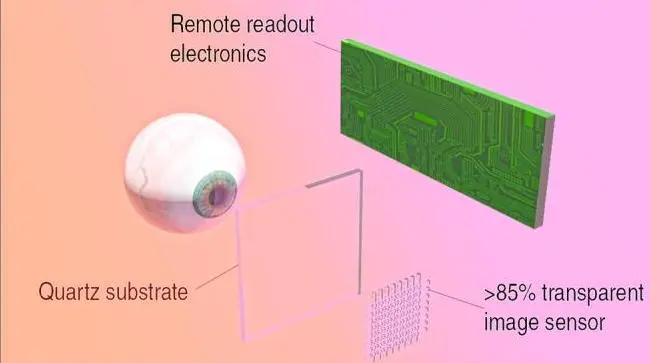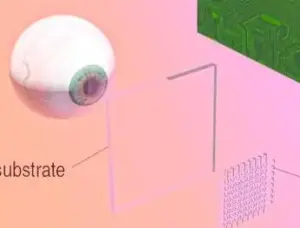Image sensors are components in cameras and other devices that capture visual information. They are fundamental in many devices and technologies we use daily. These sensors are typically opaque, meaning you can’t see through them. Back in 2015, researchers from the Fraunhofer Institute delivered a paper on a bidirectional OLED microdisplay that could both show images (like a regular screen) and capture them (like a camera). One of the target uses was augmented reality (AR) with the bidirectional technology developed allowing the display to also detect and respond to eye movements.

Now, there’s a better way. Qurv Technologies, and its partners at the ICFO at Barcelona Institute of Science and Technology, have released their research on the development of a novel semitransparent image sensor. Boasting an 8 × 8 array of semitransparent photodetectors positioned on a fully transparent substrate, these innovative sensors achieve an optical transparency of 85–95%. Over 90% of the sensor’s pixels demonstrate a noise equivalent irradiance of less than 10-4 W/m2 for wavelengths of 637 nm.
Conventional materials fall short in allowing for photodetector integration into things like AR glasses. The research team’s approach combined graphene on a clear quartz substrate with a fine layer of quantum dots. While these sensors absorb less light than typical silicon models, they convert the absorbed light to an electrical signal with an efficiency of approximately 60% — a rate the researchers noted as “quite high” and comparable to conventional silicon photodetectors.

Transmission of the image sensor, using the ITO-quartz structure as a baseline. (Source: ACS Photonics)
In the study, the transparency was assessed using a Cary 5000 spectrophotometer. The researchers used a quartz substrate that had ITO (Indium Tin Oxide) lines on it as their baseline to gauge the transparency of individual pixels. Based on their measurements, it was found that each pixel, on average, transmitted about 91.2% of the visible light. For context, previous studies have indicated that graphene, a material, absorbs about 2% of visible light. Given this data and the 91.2% transparency of the pixel, the researchers inferred that quantum dots, another component of the device, are responsible for absorbing roughly 6-7% of the visible light that strikes them.
Who is Qurv Technologies
Qurv officially spun out of ICFO this July, 2020. The company started out with ten patent families under its belt. The patents were primarily around computer vision applications. One of the standout innovations from Qurv is its graphene and quantum dot image sensors platform. This platform is capable of operating from the visible spectrum to the short-wave infrared (SWIR) range. What’s more, the technology dovetails seamlessly with the prevailing CMOS processes that are both cost-effective and highly manufacturable.
Qurv’s supported by the likes of the Government of Catalonia, the Ministry of Economy, Industry and Competitiveness of Spain, the European Research Council, and the Barcelona and Castelldefels City Councils. Further financial backing was provided by the la Caixa Foundation, European Regional Development Funds allocated to Generalitat de Catalunya, and the European Union’s Horizon 2020 research and innovation program.
The genesis of Qurv can be traced back to collaboration between the Functional Optoelectronic Nanomaterials group and the Quantum Nano-Optoelectronics group at ICFO. The brain trust behind these groups, ICREA Professors Drs Gerasimos Konstantatos and Frank Koppens, are not only part of ICFO but also the founding members of Qurv.
References
- Mercier, G., Polat, E. O., Shi, S., Gupta, S., Konstantatos, G., Goossens, S., & Koppens, F. H. (2023). Semitransparent Image Sensors for Eye-Tracking Applications. ACS Photonics. DOI: 10.1021/acsphotonics.3c00473
- Vogel, U., Wartenberg, P., Richter, B., Brenner, S., Baumgarten, J., Thomschke, M., Fehse, K., & Hild, O. (2015). Near-to-eye displays with embedded eye-tracking by bi-directional OLED microdisplay (L. Mazuray, R. Wartmann, & A. P. Wood, Eds.; p. 96263I). https://doi.org/10.1117/12.2206168

